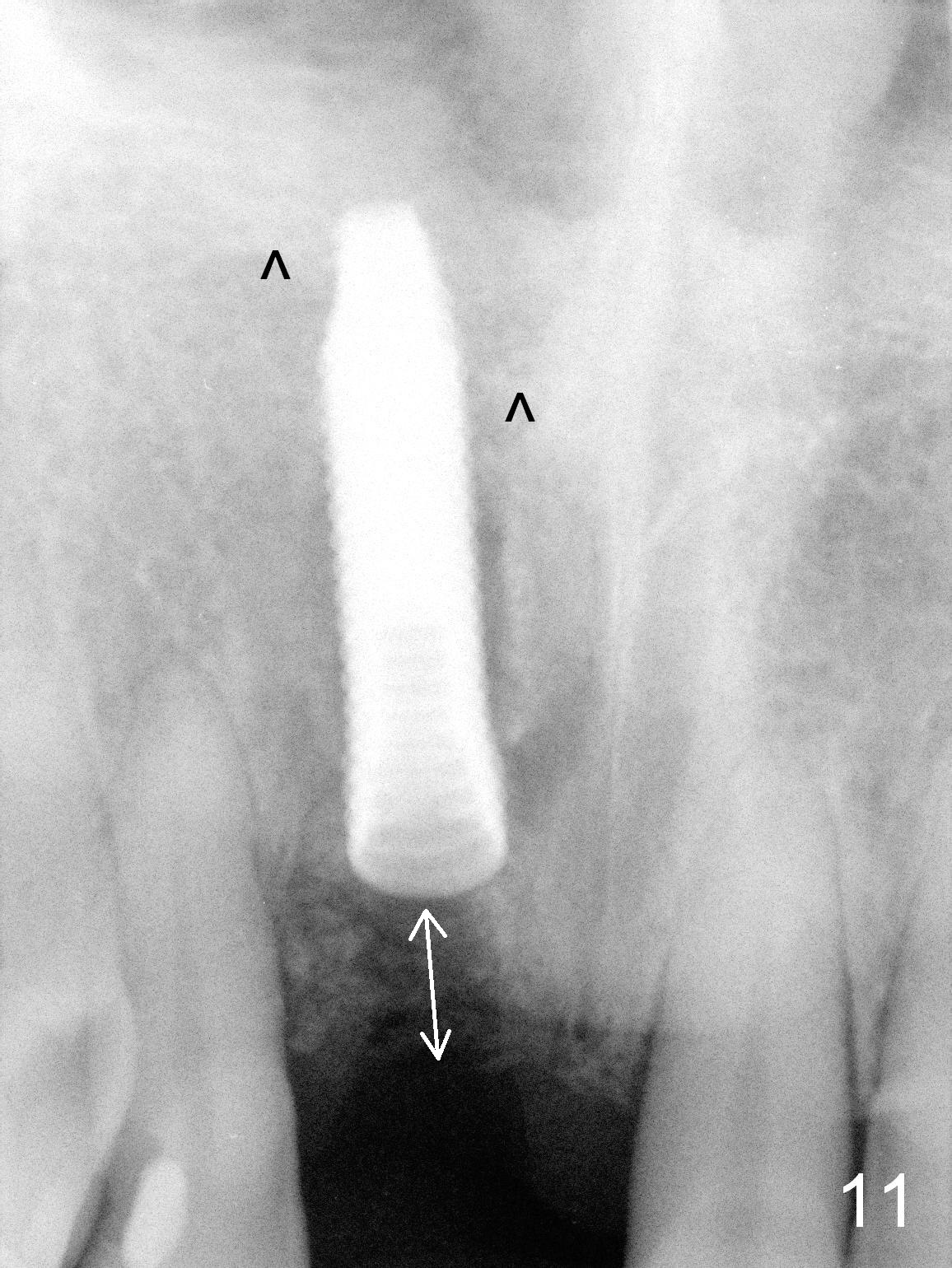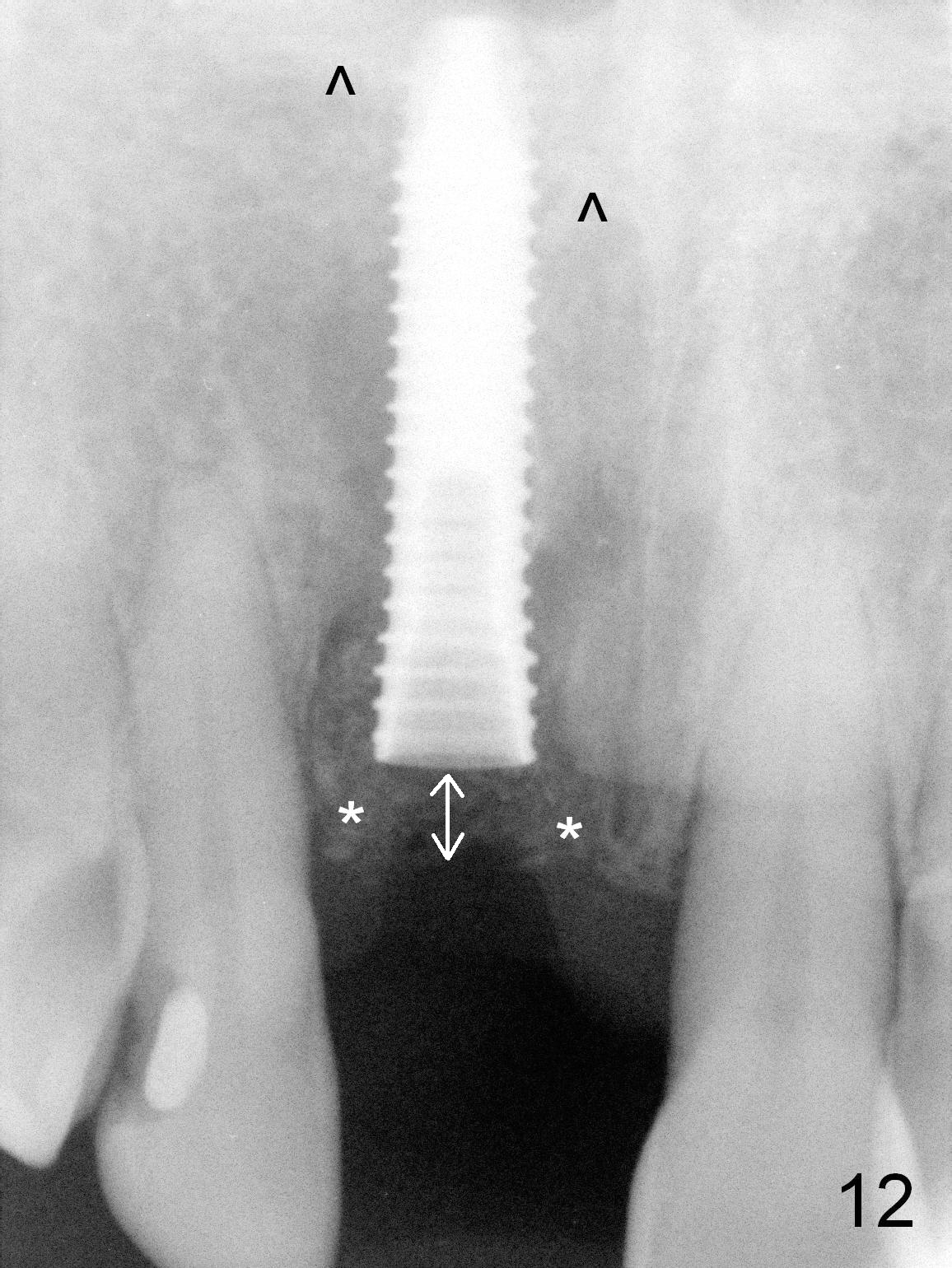

 |
 |
Twenty days postop, the implant is found to be loose and removed. It appears that deep bite, short implant (11 mm), osteoporosis and change in implant position in the previous placement are unfavorable factors. What can be changed now is an increase in the depth of osteotomy (20 mm) and implant diameter (Fig.11: from 3.8 to 4 mm). It appears that the 4x18 mm implant is placed in a wrong position or direction with minimal stability (Fig.11) after 2 mm pilot drilling. The bone is soft.
When a 3x18 mm drill is used in a more definitive palatal and mesial direction with apparent penetration of the relatively solid nasal floor (arrowheads), the stability of the re-inserted implant increases (~35 Ncm) with shallower placement (Fig.12: double arrows, as compared to Fig.11, to reduce blockage of the nasolacrimal duct). No bone graft is used for nasal floor lift (to reduce the chance of nasolacrimal duct blockage) prior to implantation. Instead bone graft is added mainly buccally after implantation (Fig.13 *, as compared to the old one in Fig.12 *).
Nasal Floor Lift Last Next Xin Wei, DDS, PhD, MS 1st edition 05/19/2016, last revision 09/16/2020